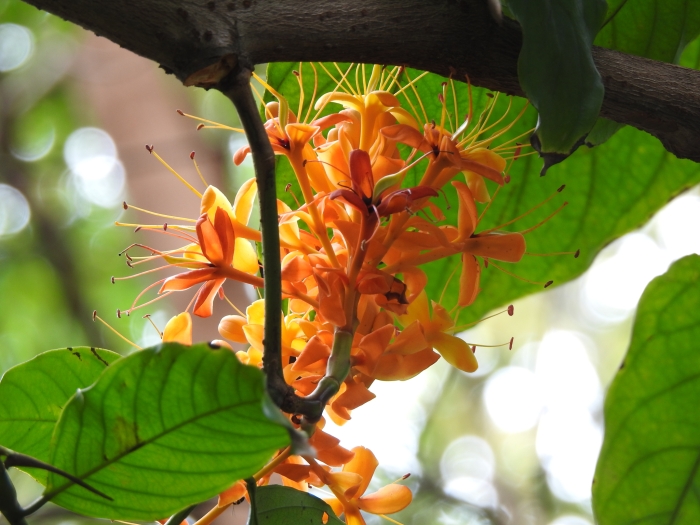Ashoka Tree
(Saraca indica)
Ashoka Tree (Saraca indica)
/
/

Jacy Chen
CC BY 4.0
Image By:
Jacy Chen
Recorded By:
Copyright:
CC BY 4.0
Copyright Notice:
Photo by: Jacy Chen | License Type: CC BY 4.0 | License URL: http://creativecommons.org/licenses/by/4.0/ | Rights Holder: Jacy Chen | Publisher: iNaturalist | Date Created: 2020-03-05T14:33:30-08:00 |

























Estimated Native Range
Summary
Saraca indica, commonly known as the Ashoka tree, is a semi-evergreen tree native to the Indian subcontinent and parts of Southeast Asia, including India, Nepal, and Sri Lanka. It thrives in tropical rainforests and along riverbanks, where it is part of the understory vegetation. The Ashoka tree typically grows to a height of 15-20 feet (4.5-6 meters) with a spreading, umbrella-like canopy. Its leaves are pinnate, with narrowly lanceolate leaflets that are shiny and dark green. The tree is renowned for its beautiful and fragrant orange or red flowers that bloom in heavy, lush bunches from February to April. The flowers are not only showy but also hold significant cultural importance in India.
The Ashoka tree is valued for its year-round foliage and the striking appearance of its flowers, making it a popular choice for ornamental planting in tropical and subtropical gardens. It is often used in religious and cultural ceremonies. In cultivation, it requires moist, well-drained soil and thrives in full sun to partial shade. While it is relatively low-maintenance, it does need protection from frost and prefers a humid climate. The tree is not known for aggressive roots or major disease problems, but it can suffer from leaf spot and rust if the foliage remains wet for extended periods. It is not considered invasive outside its native range.CC BY-SA 4.0
The Ashoka tree is valued for its year-round foliage and the striking appearance of its flowers, making it a popular choice for ornamental planting in tropical and subtropical gardens. It is often used in religious and cultural ceremonies. In cultivation, it requires moist, well-drained soil and thrives in full sun to partial shade. While it is relatively low-maintenance, it does need protection from frost and prefers a humid climate. The tree is not known for aggressive roots or major disease problems, but it can suffer from leaf spot and rust if the foliage remains wet for extended periods. It is not considered invasive outside its native range.CC BY-SA 4.0
Plant Description
- Plant Type: Tree
- Height: 66-79 feet
- Width: 39-59 feet
- Growth Rate: Moderate
- Flower Color: Orange
- Flowering Season: Spring
- Leaf Retention: Evergreen
Growth Requirements
- Sun: Full Sun, Part Shade
- Water: Medium
- Drainage: Medium
Common Uses
Bird Garden, Butterfly Garden, Fragrant, Low Maintenance, Showy Flowers
Natural Habitat
Native to tropical rainforests and riverbanks in the Indian subcontinent and parts of Southeast Asia
Other Names
Common Names: Ashoka Tree, Jonesia Asoka, Asoka-Tree, Sorrowless Tree
Scientific Names: , Saraca indica, Ionezia asoca, Jonesia minor, Jonesia pinnata, Saraca arborescens, Saraca bijuga, Saraca harmandiana, Saraca indica var. bijuga, Saraca indica var. zollingeriana
GBIF Accepted Name: